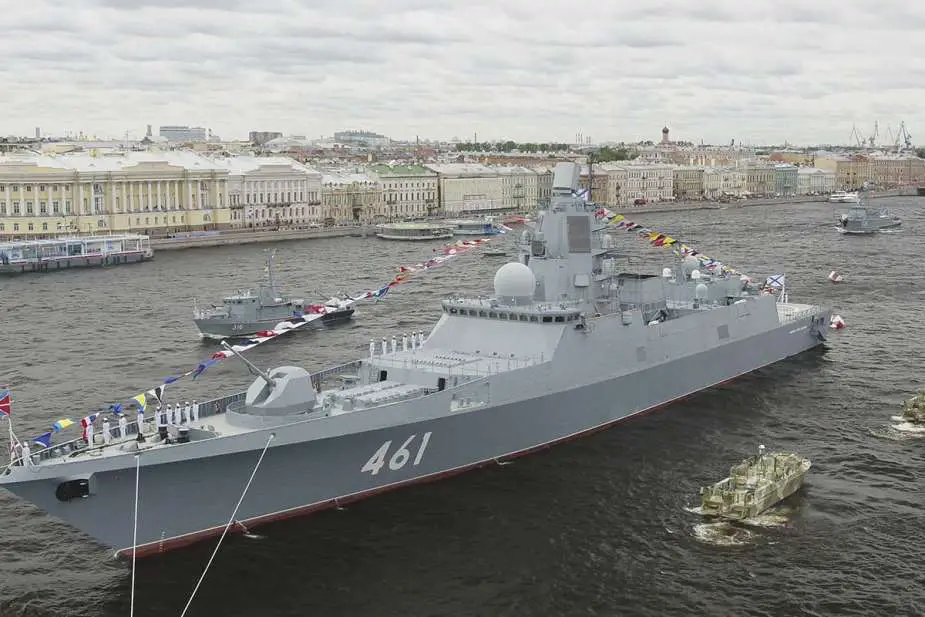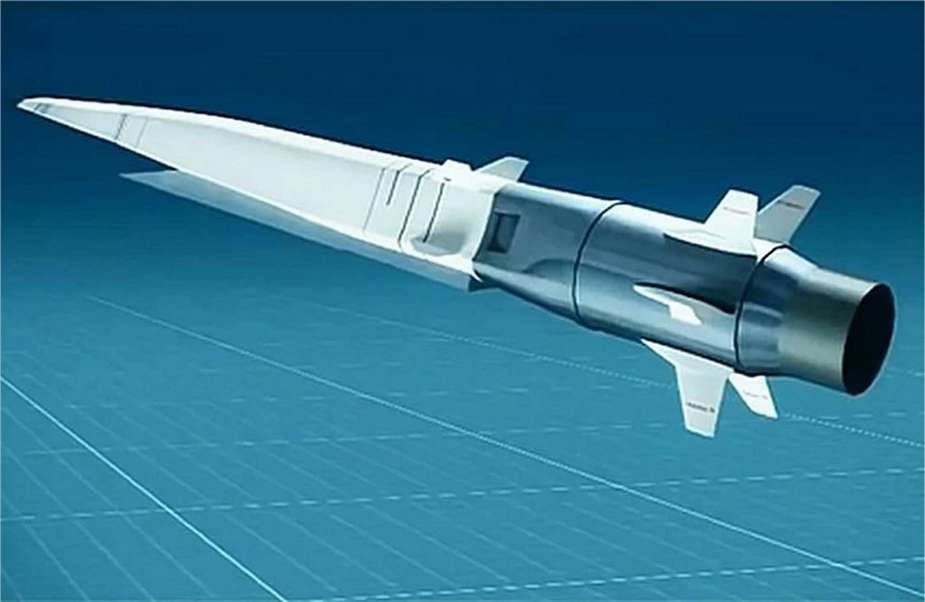Breaking news
Russian Navy Project 22350 Admiral Kasatanov frigate upgraded with Zircon hypersonic missiles.
According to TASS on December 11, 2023, the Russian Navy's frigate Admiral Kasatonov completed its modernization process, allowing it to integrate Zircon hypersonic missiles. Captain Alexey Ryaboshtan, the commander of the Admiral Gorshkov-class frigate, has disclosed that the Admiral Kasatonov frigate now carries four Zircon hypersonic missiles, though test firings are pending.
Follow Navy Recognition on Google News at this link
 Russian Navy Project 22350 Admiral Kasatanov frigate at the dress rehearsal of the Main Naval Parade at St. Petersburg in 2021 (Picture source: Wikimedia)
Russian Navy Project 22350 Admiral Kasatanov frigate at the dress rehearsal of the Main Naval Parade at St. Petersburg in 2021 (Picture source: Wikimedia)
During a visit to the frigate, Russian President Vladimir Putin examined the ship's upgraded navigation station, which now features a digital system. This advanced system provides comprehensive information on operational scenarios, including surface, underwater, and air situations, aiding in navigation and decision-making for the crew.
Admiral Nikolai Evmenov, the Commander-in-Chief of the Russian Navy, also visited the frigate and provided additional context. He mentioned that the Project 22350 series of frigates, including Admiral Kasatonov, will eventually consist of 10 ships, both existing and new, all capable of carrying Zircon hypersonic missiles. Furthermore, during the XIII International Forum "The Arctic: Present and Future" held in St. Petersburg on December 7, 2023, Admiral Evmenov made a notable announcement. He stated that all new ships and shore-based strike systems entering the Russian Navy would be equipped with various modern missiles, including Zircon, Caliber, and Onyx.
The Admiral Gorshkov-class frigates, known as Project 22350 in Russia, are currently under construction by Severnaya Verf in Saint Petersburg, with an estimated cost of approximately $250 million per unit. These frigates have a standard displacement of 4,550 tons, increasing to 5,400 tons when fully loaded. They measure 135 meters in length, with a beam of 16 meters and a draft of 4.5 meters.
The propulsion system employs CODAG (Combined Diesel and Gas) technology, featuring two cruise diesel engines and two boost gas turbines, generating a combined output of 65,400 shp (48,800 kW). This configuration allows the frigates to reach a top speed of 29.5 knots and a range of up to 4,850 nautical miles at a speed of 14 knots.
These frigates are armed with a variety of weaponry, including a 130 mm naval gun, 16 vertical launch system (VLS) cells for Kalibr, Oniks, and Zircon anti-ship cruise missiles, as well as Otvet anti-submarine missiles. They also feature Redut VLS cells for surface-to-air missiles, two Palash CIWS (Close-In Weapon System) installations, eight torpedo tubes, and two machine guns for defensive purposes. Additionally, these frigates can accommodate and operate a Ka-27 series helicopter.
In terms of sensors and electronic systems, the frigates are outfitted with advanced radar systems, sonar, navigation equipment, and electronic warfare systems. The Sigma-22350 combat system enhances their overall situational awareness and combat capabilities.
These Admiral Gorshkov-class frigates represent a significant advancement compared to their Soviet-era predecessors, the Neustrashimy and Krivak-class frigates, incorporating advanced technology and weaponry with the ability to fulfill various roles, including long-range strikes, anti-submarine warfare, and escort missions.
As of 2023, the Russian Navy has ordered a total of ten vessels of this class, with delivery expected by 2027. Additionally, an upgraded variant known as Project 22350M, sometimes referred to as "Super Gorshkov," is in development, featuring an enlarged hull with increased displacement and a total of 64 VLS cells for Kalibr, Onyx, and Zircon cruise missiles along with the Poliment-Redut air defense missile system, with up to 100 missiles.
 The hypersonic speed of the Zircon missile generates a plasma cloud during its hypersonic cruise phase, absorbing radio waves and making it difficult to detect by active radar systems. (Picture source: Yandex)
The hypersonic speed of the Zircon missile generates a plasma cloud during its hypersonic cruise phase, absorbing radio waves and making it difficult to detect by active radar systems. (Picture source: Yandex)
The 3M22 Zircon, also designated as 3M22 Tsirkon (NATO reporting name: SS-N-33), is a Russian hypersonic cruise missile that serves multiple purposes, including anti-ship, land-attack, and submarine-launched missions.
The Zircon missile measures approximately 9 meters in length with a diameter of 60 centimeters and carries a warhead that can accommodate high-explosive (HE) or nuclear payloads. It has a maximum firing range of 1,000 kilometers and can reach a maximum speed of Mach 9 (6,900 mph; 11,000 km/h; 3.1 km/s). This exceptional speed makes it challenging for existing missile defense systems to intercept, enhancing its effectiveness in penetrating enemy defenses. Additionally, the hypersonic speed of Zircon generates a plasma cloud during its hypersonic cruise phase, absorbing radio waves and making it difficult to detect by active radar systems.
The missile's flight profile involves a booster stage with solid-fuel engines for supersonic acceleration, followed by a scramjet motor in the second stage for hypersonic flight. It operates at altitudes of up to 28 kilometers (92,000 feet) and can cover different ranges, ranging from 135 to 270 nautical miles (250 to 500 kilometers) at low altitudes and up to 400 nautical miles (740 kilometers) in a semi-ballistic trajectory.




























